How does eG Enterprise Monitor Docker?
eG Enterprise is capable of monitoring both Standalone Docker Host as well as the Docker Hosts managed by a Kubernetes Cluster by installing an eG agent as a container on the Docker Hosts. To monitor a Standalone Docker Host, administrators need to install the eG agent container published in the public Docker repository on the Docker Host. To monitor Docker Hosts managed by a Kubernetes Cluster, administrators need to deploy a DaemonSet which will automatically install the eG agent as a container on all the Docker Hosts in the Cluster. A DaemonSet ensures that all (or some) Nodes run a copy of the eG agent container. As Docker Hosts are added to the Kubernetes cluster, the DaemonSet automatically runs a copy of the eG agent container on those Docker Hosts.
How does eG Enterprise monitor Docker Hosts managed by Kubernetes Cluster?
To monitor the Docker Hosts managed by a Kubernetes Cluster, administrators need to deploy a DaemonSet which will automatically install the eG agent container (published on the Docker repository) on all the Docker Hosts.
The steps that follow will discuss in detail on how the eG agent container helps in monitoring the Docker Hosts managed by a Kubernetes cluster:
- Login to the eG admin interface.
-
Figure 1 then appears prompting you to pick what you want to monitor. Select Kubernetes and Containers from Figure 1.
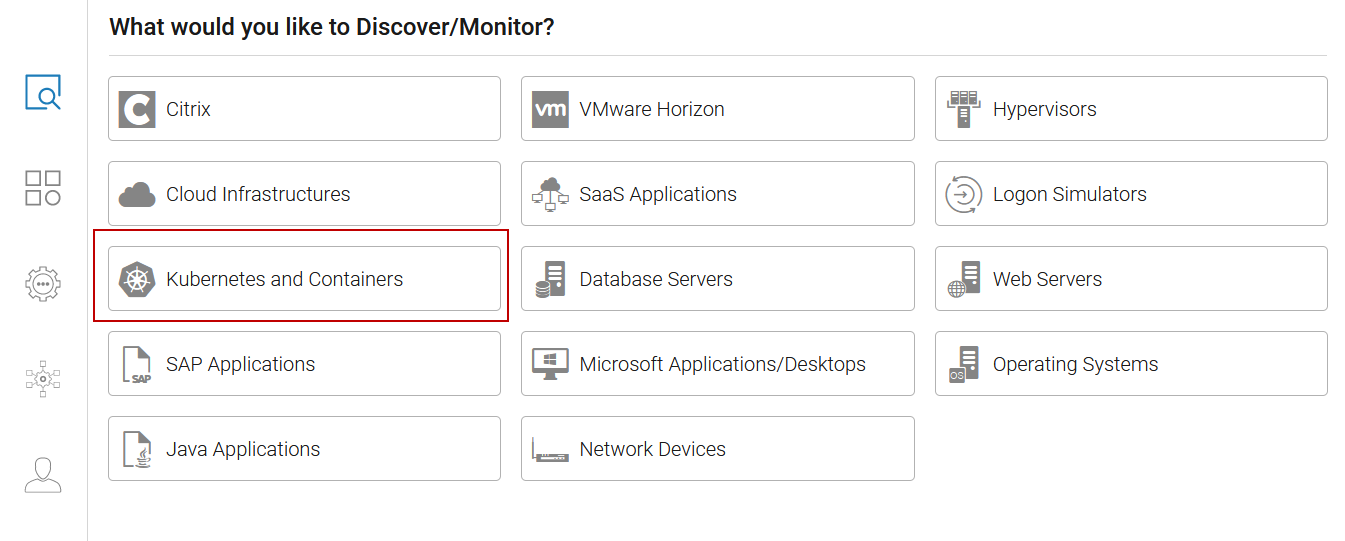
-
Figure 2 then appears. Here, click the Kubernetes, Openshift, EKS, AKS tile.
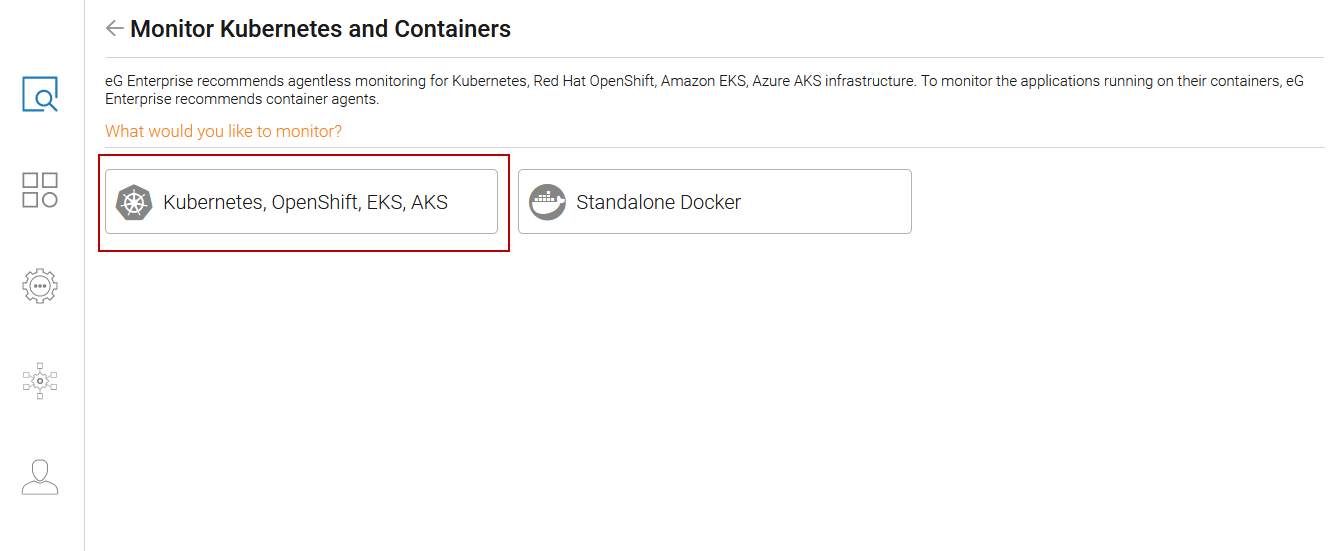
Figure 2 : Choosing to monitor Kubernetes, Openshift, EKS, AKS infrastructures
-
Figure 3 then appears. Here, choose Container Applications tile.
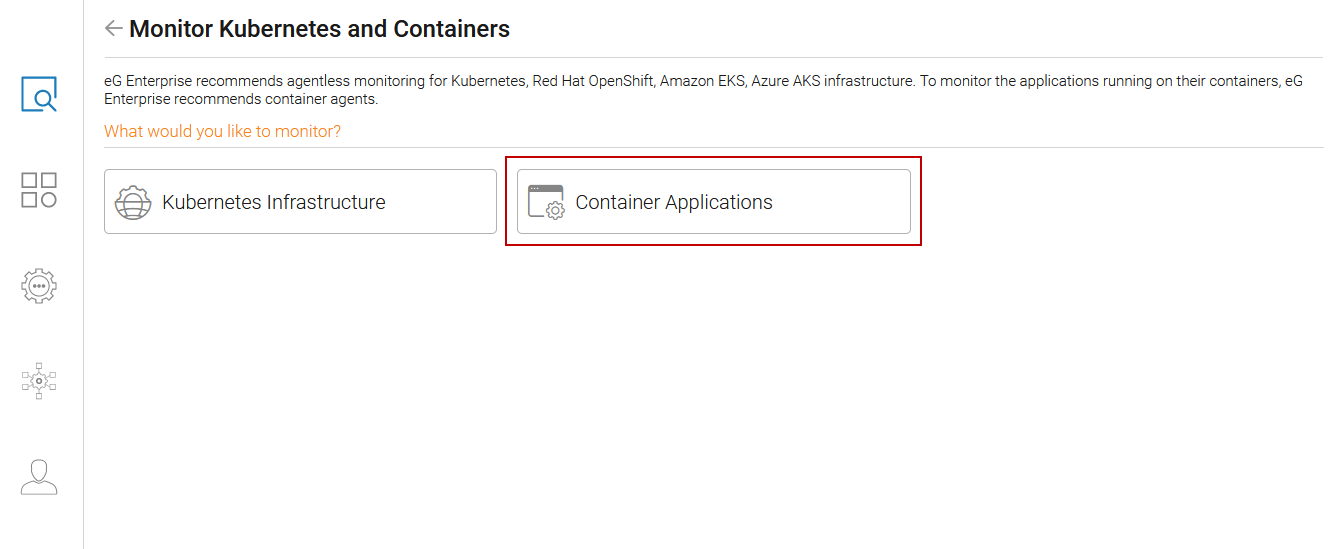
-
Figure 4 then appears. By default, eG Enterprise monitors the target Docker Host and the applications installed on the Docker Hosts using a single container agent. To deploy the container agent, you need to first determine whether the target Docker is installed on a Kubernetes platform or an Openshift platform. By default, Kubernetes is chosen from the Platform list.
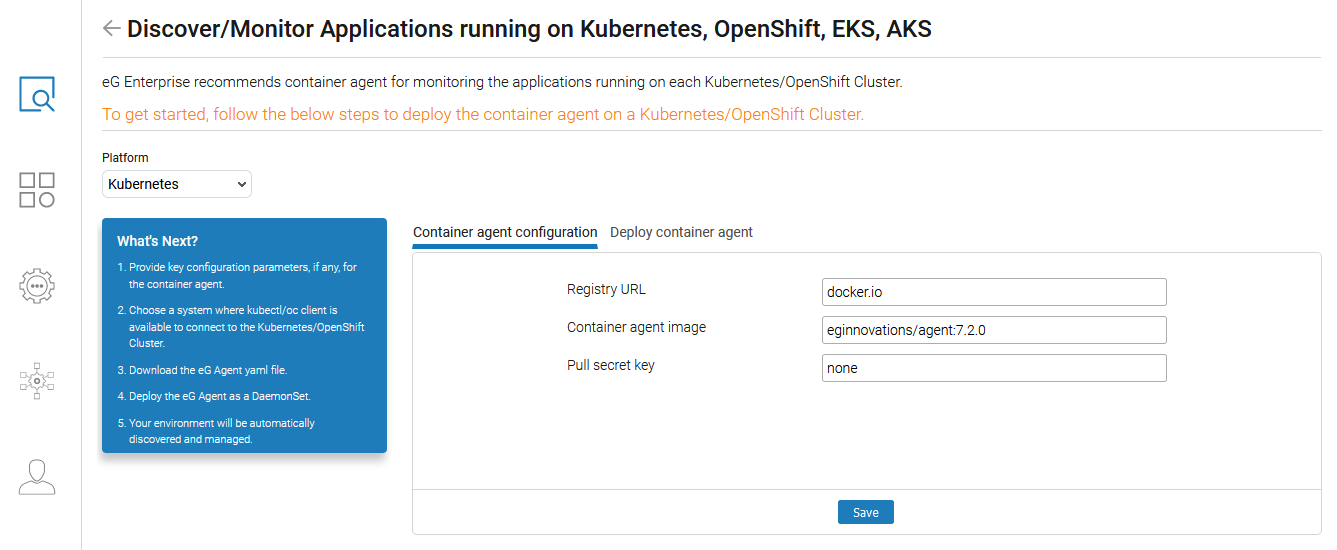
Figure 4 : Selecting the platform on which the Docker is operating
-
By default, the Container agent configuration tab is displayed as shown in Figure 4. The details of the agent to be installed as the container are specified by default.
-
Registry URL: By default, the container agent is published on the Docker repository with Public access. Specify the exact URL that should be accessed to download the container agent.
-
Container agent image: Specify the exact image that should be downloaded from the Registry URL to deploy the container agent as a Daemonset. By default, the version of the container agent should be the same as that of the eG manager. For example, if the version of the eG manager is 7.2, then, the container agent image too should be of v7.2.
-
Pull secret key: By default, none is displayed against this parameter indicating that the container agent image is published on the Docker repository with Public access. In some highly secure environments, administrators may privately publish the container agent image in the Docker repository. In such case, ensure that you specify the secret key to access the container agent image from the Docker repository.
-
-
Next, navigate to the Deploy container agent tab (see Figure 5).
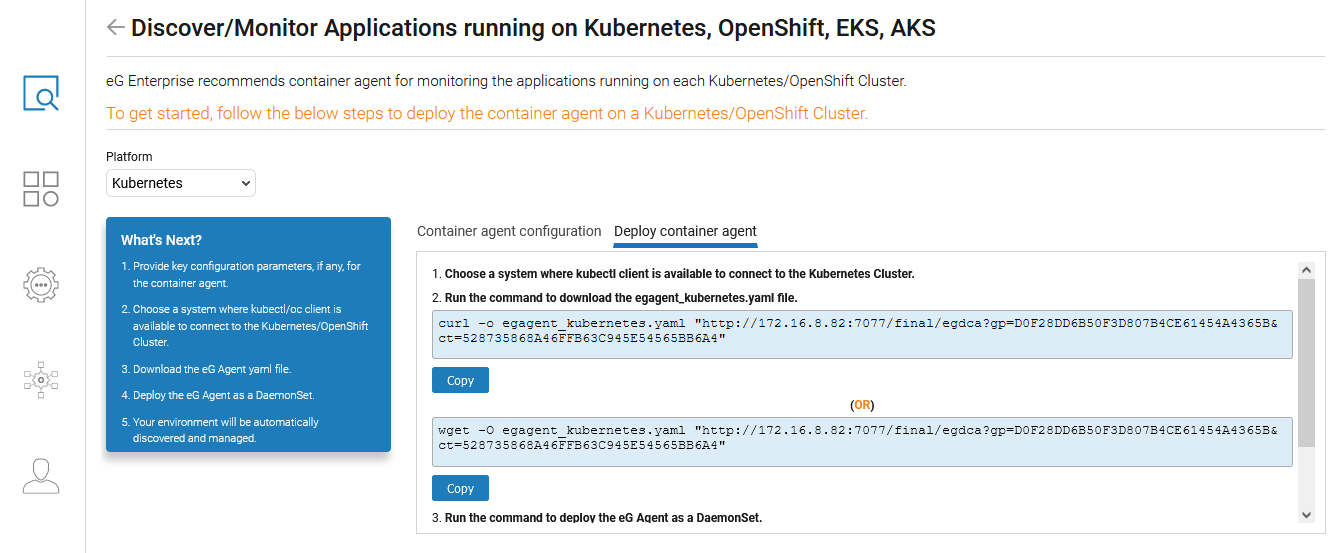
Figure 5 : Steps to deploy the container agent as a Daemonset
To deploy the container agent as a Daemonset, you need to download the egagent_kubernetes.yaml file. To download the file do the following:
-
In the target environment, choose a system where kubectl client is available to connect to the Kubernetes Cluster.
-
Run either of the following commands specified in step 2 of Figure 5 to download the egagent_kubernetes.yaml file. The file will now be successfully downloaded.
-
-
Since you are downloading the file from the eG Enterprise console, the env: section of the downloaded file will be auto-populated with the following variables:
-
EG_MANAGER
-
EG_MANAGER_PORT
-
EG_MANAGER_SSL
-
EG_AGENT_IDENTIFIER_ID
Ensure that the variables remain unchanged.
-
-
Now, executing the following command will help you deploy the eG agent as a Daemonset.
kubectl create -f egagent_kubernetes.yaml
How does eG Enterprise monitor a Standalone Docker Host?
If you wish to install the eG agent container directly on a standalone Docker Host, then, do the following:
-
Click the Standalone Docker tile from Figure 2.
-
Figure 6 then appears. To install the eG agent container on a standalone Docker Host, then, based on your environment and requirement, execute one of the commands specified in Figure 6.
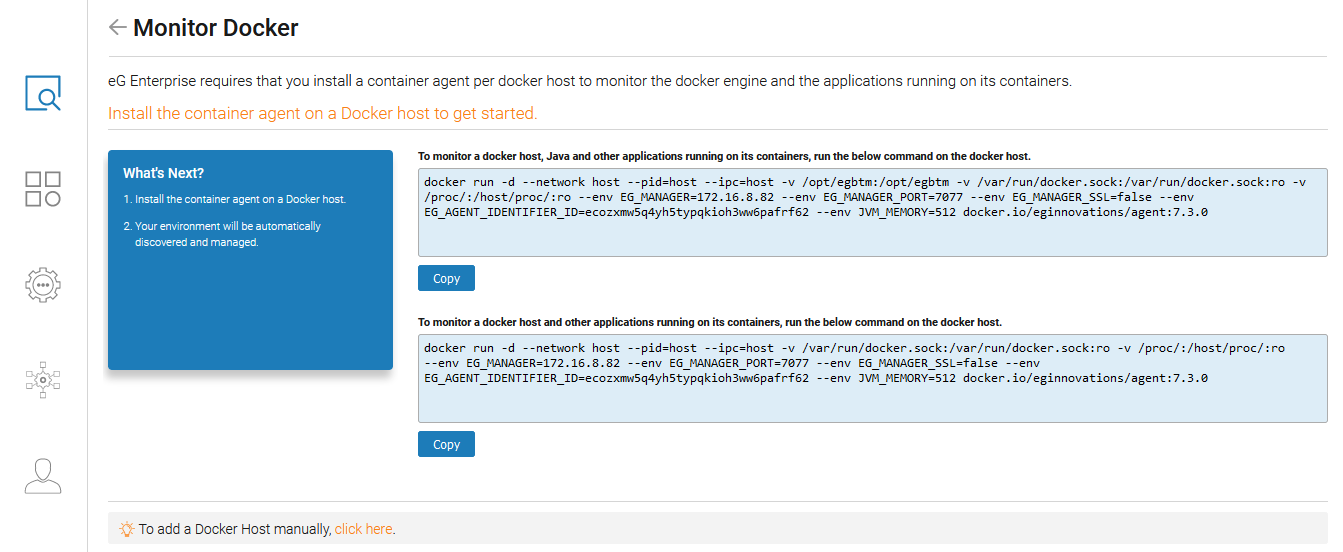
Figure 6 : Steps to install the container agent on Docker Hosts
Note:
eG Enterprise provides monitoring support to Docker hosts on Linux platforms only, and not on Microsoft Windows platform.
